-
Water Quality
Accessing Water Quality
& Risk Management
Agriculture is a leading driver of nutrient pollution. Protect water quality and meet EU rules on nutrient runoff. ODOS helps you measure impacts from agriculture and restore biodiversity at scale.
Understanding Water Pollution in Agri-Food
Discover the role of water quality in sustainable farming.
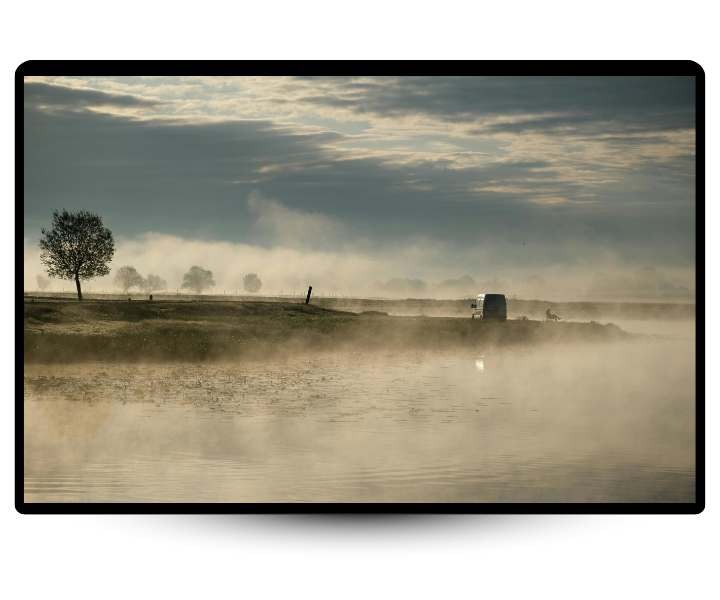
Why Water Quality is Critical
Water pollution from agriculture, especially livestock and fertiliser runoff, is one of the main drivers of freshwater degradation globally. Fertilisers are widely applied to farmland to boost crop growth, but when it rains or fields are irrigated, excess nutrients like nitrogen and phosphorus can wash off into nearby rivers, lakes, and marine areas. This is pushing ecosystems beyond their limits and causing eutrophication, harmful algal blooms, and biodiversity loss.
-
Water pollution from farming drives freshwater ecosystem decline.
-
Nutrient runoff from fertilisers causes algal blooms, biodiversity loss.
-
Livestock and crop systems must cut runoff to protect water.
The Impact of Nitrogen and Phosphorus
Nitrogen and phosphorus are essential nutrients that plants need to grow. However, when these nutrients leave farmland and enter water systems, they become pollutants that can devastate aquatic ecosystems.
- What is Nitrogen?
Nitrogen (N) is a chemical element that makes up about 78% of Earth’s atmosphere. In agriculture, it’s applied as fertilizer in forms like nitrate (NO₃⁻) and ammonium (NH₄⁺) to promote plant growth and increase crop yields.
Essential for:
- Protein synthesis in plants
- Chlorophyll production (green color)
- Overall plant growth and development
- What is Phosphorus?
Phosphorus (P) is a chemical element that doesn’t exist freely in nature but is found in compounds like phosphate (PO₄³⁻). It’s applied to farmland as fertilizer to support root development and energy transfer in plants.
Essential for:
- Root system development
- Energy storage and transfer (ATP)
- DNA and RNA formation
- Nitrogen Pollution
When excess nitrogen from fertilizers leaches through soils into groundwater and rivers, it acts like fertilizer for algae and aquatic plants. This triggers explosive algal growth (algal blooms) that eventually die and decompose, consuming oxygen and creating “dead zones” where fish cannot survive.
-
Excess nitrogen from fertilisers leaches into rivers and groundwater.
-
This fuels algal blooms that choke freshwater ecosystems.
-
Algae die-offs consume oxygen, creating dead zones for fish.
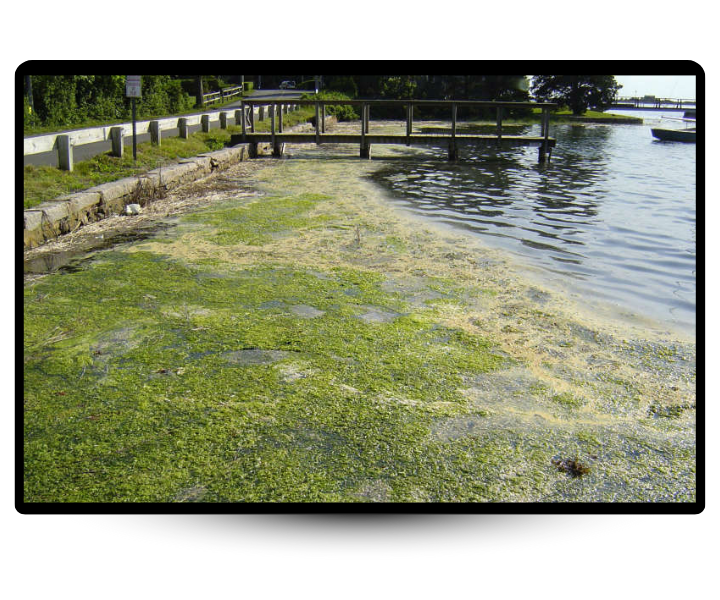
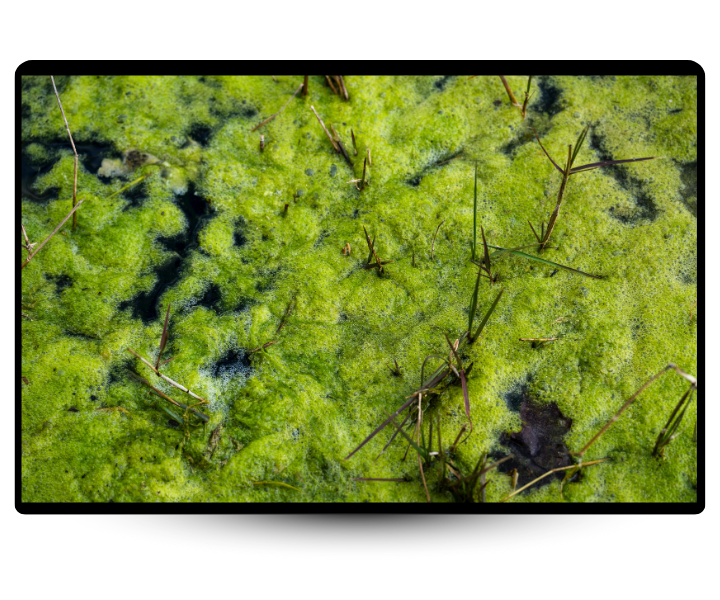
- Phosphorus Pollution
Phosphorus is the key driver of algal overgrowth in freshwater. As the “limiting nutrient,” even small increases can unlock explosive algae growth. When phosphorus runs off into lakes or rivers, especially during rain, it acts like a super-fertilizer for algae. These algal blooms block sunlight, reduce oxygen levels, and disrupt entire food chains.
-
Phosphorus is the main trigger of algal blooms in freshwater.
-
Even small runoff spikes can fuel explosive algae growth.
-
Blooms block sunlight, cut oxygen, and harm aquatic life.

- Soil Type Matter
Soil is a mix of sand, silt, clay, and organic matter. The size and arrangement of these particles control how water moves, some soils let water soak in deeply, while others make it run off the surface.
-
Sandy Soils
Leak nutrients quickly through large pore spaces.
-
Clay Soils
Drive surface runoff during heavy rainfall events.
-
Organic Soils
Hold nutrients but release them gradually over time.
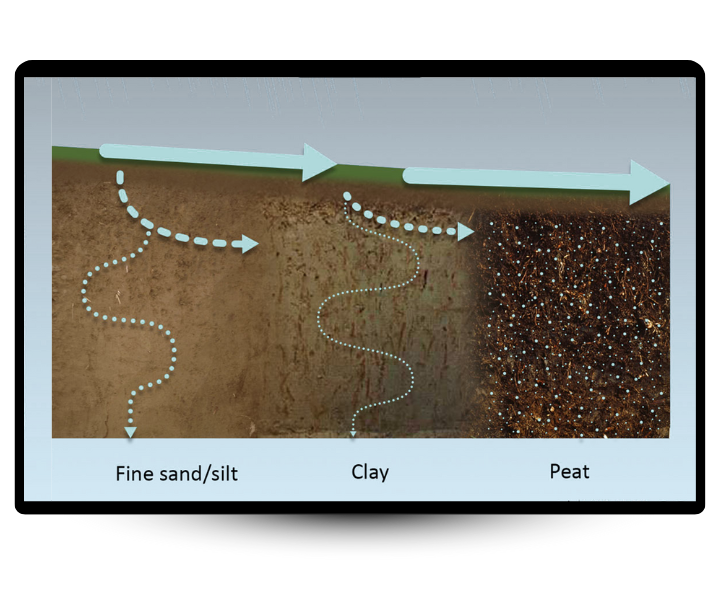
Why Measuring Water Flow Paths?
Water doesn’t stay put. Rainfall creates flow paths that determine where nutrients leave farmland and enter rivers, lakes, or aquifers. Mapping these flow paths is critical to understanding farm-level pollution risks and to designing effective mitigation strategies.
Environmental Impact
Nutrient runoff from fertiliser creates algal blooms and hypoxic "dead zones" that suffocate aquatic life, disrupting entire ecosystem food chains.
Regulatory Risk
Stricter water quality regulations and compliance requirements create significant legal and financial risks for agricultural operations.
Brand Protection
Consumer awareness of environmental issues makes water quality a critical component of brand reputation and market access.
How ODOS Measures
Pollution Risk and Flow Paths
You Provide The Location, We Deliver The Data.
ODOS combines advanced satellite imagery, digital elevation models, and soil hydrology data to map exactly how nutrients move across your landscape. Our proprietary analysis reveals the specific pathways that create water pollution risks and the precise locations where interventions will be most effective.
Flow Path Analysis
We combine satellite elevation models, soil maps, and rainfall data to model how water flows across each field. Our AI pinpoints critical runoff channels that carry nutrients and pollutants into nearby rivers and lakes.
Soil Wetness Mapping
ODOS detects soil moisture directly from satellite imagery, classifying areas as well-drained, imperfect, poor, very poor, peat, or alluvium. This gives a clear picture of which soils drive runoff risk and which absorb water effectively.
Pollution Risk Scoring
By combining soil type, slope, water proximity, and land management, ODOS generates a pollution risk score for every field. This allows you to target high-risk zones, prioritize investments, and track ROI on mitigation measures.
Platform Capabilities
- High-resolution optical and radar imagery
- Satellite-powered soil mapping
- Water flow models
- Action-ready insights for ROI and mitigation
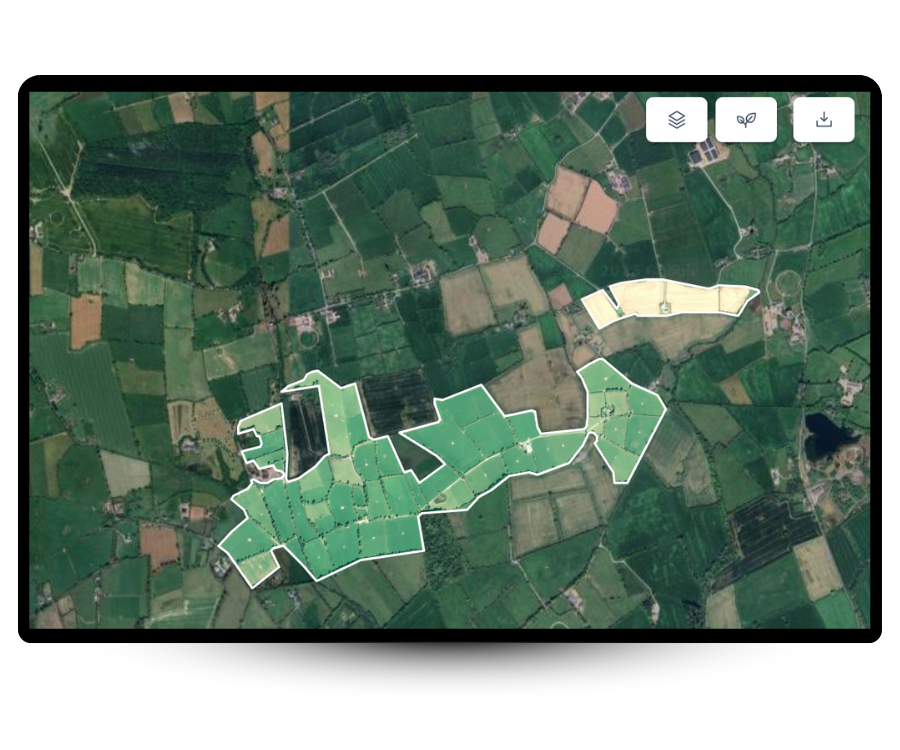
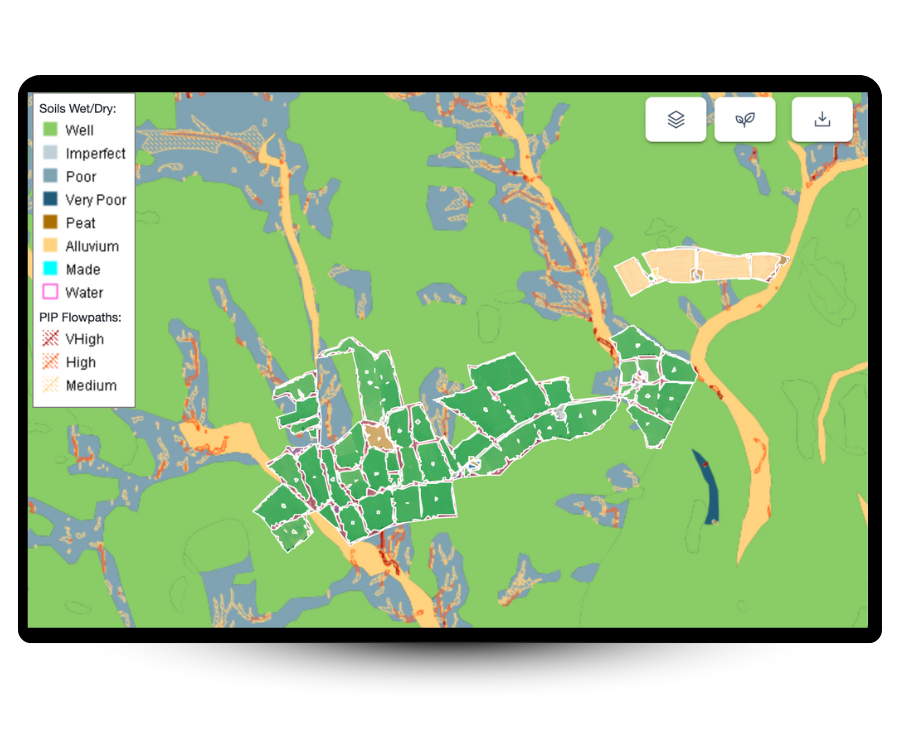
Improving Water Quality On Farms
Two Strategic Approaches
Once you understand where and how nutrients leave your farm, the next step is implementing targeted mitigation strategies. The most effective approach depends on your soil type and the dominant pollution pathway.
- Organic Soil Strategy
On organic soils, nature-based solutions like hedgerows, vegetative strips, and ponds intercept phosphorus-rich runoff before it reaches waterways. These interventions work by physically blocking and filtering surface water flow, allowing sediment-bound phosphorus to settle and be absorbed by vegetation.
-
Organic soils generate phosphorus-rich runoff into waterways.
-
Hedgerows, strips, and ponds intercept and filter this runoff.
-
Vegetation captures sediment-bound phosphorus before it spreads.
- Mineral Soils Strategy
On mineral soils, the focus is on reducing nitrogen at the source by cutting fertiliser use and adopting clover or multispecies swards to lower inputs. This approach prevents nitrogen from leaching through the soil profile by reducing the total nitrogen load and using plants that naturally capture atmospheric nitrogen.
-
Mineral soils lose nitrogen through leaching into water.
-
Cutting fertiliser use lowers the total nitrogen load.
-
Clover and diverse swards capture nitrogen naturally.
Frequently Asked Questions
Common questions about measuring Pollution Risk and Flow Paths in agricultural supply chains.
Nutrient runoff occurs when excess nitrogen or phosphorus from fertilizers and manure leach into groundwater or wash off fields during rainfall. These nutrients fuel algal blooms, reduce oxygen, and harm freshwater ecosystems.
Phosphorus is the “limiting nutrient” in most freshwater systems, meaning it controls how much algae can grow. Even small phosphorus runoff can trigger harmful algal blooms that damage ecosystems and water quality.
ODOS uses satellite elevation models, soil data, and rainfall patterns to map how water moves across fields. This shows where runoff concentrates, helping identify critical pollution pathways before they cause damage.
Pollution risk rises with steep slopes, poorly drained soils, proximity to rivers, and intensive land management. Combining these factors gives a risk score that shows which fields are most vulnerable to runoff.
By targeting high-risk zones with buffer strips, wetland restoration, or precision fertilizer use, farmers can cut nutrient losses. ODOS helps prioritize these actions, ensuring mitigation delivers both compliance and economic returns.
Yes, we maintain a 10-year satellite archive enabling historical analysis and trend monitoring. This allows you to track water flows and soil types over time, measure conservation success, and identify emerging threats to biodiversity in your supply chain.
Learn More About Biodiversity
Dive deeper into biodiversity measurement, conservation strategies, and sustainability reporting with our blog posts related to biodiversity.
Boost Sustainability with Biodiversity in Your Supply Chain
Biodiversity in Agriculture: Why It Matters and How to Measure It?
Biodiversity Footprinting in Vineyards: Methods and Benefits
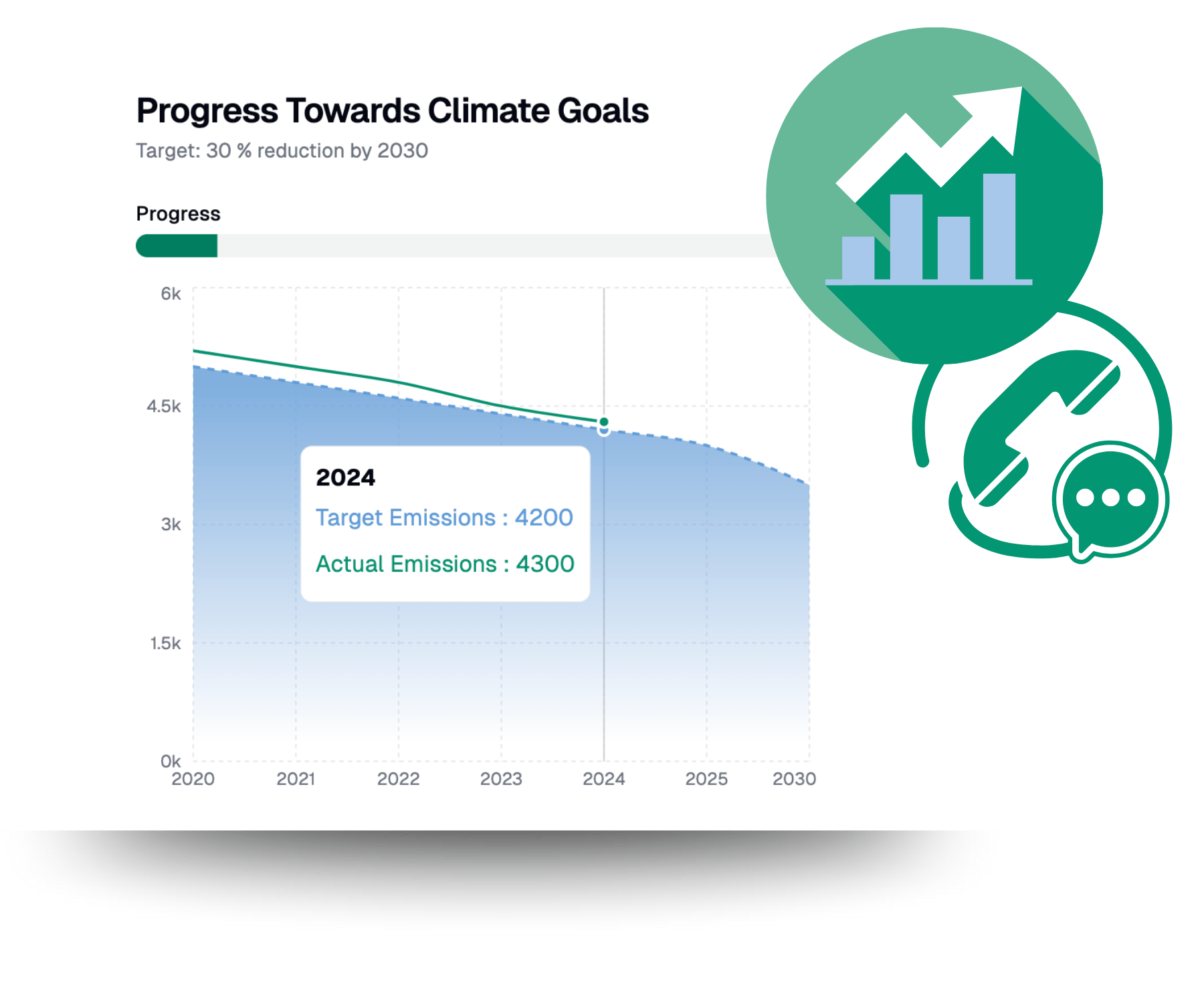
Ready To Act On Water Quality?
Book a meeting with our biodiversity specialist to explore how Water Quality Assessment can work for your supply chain.
